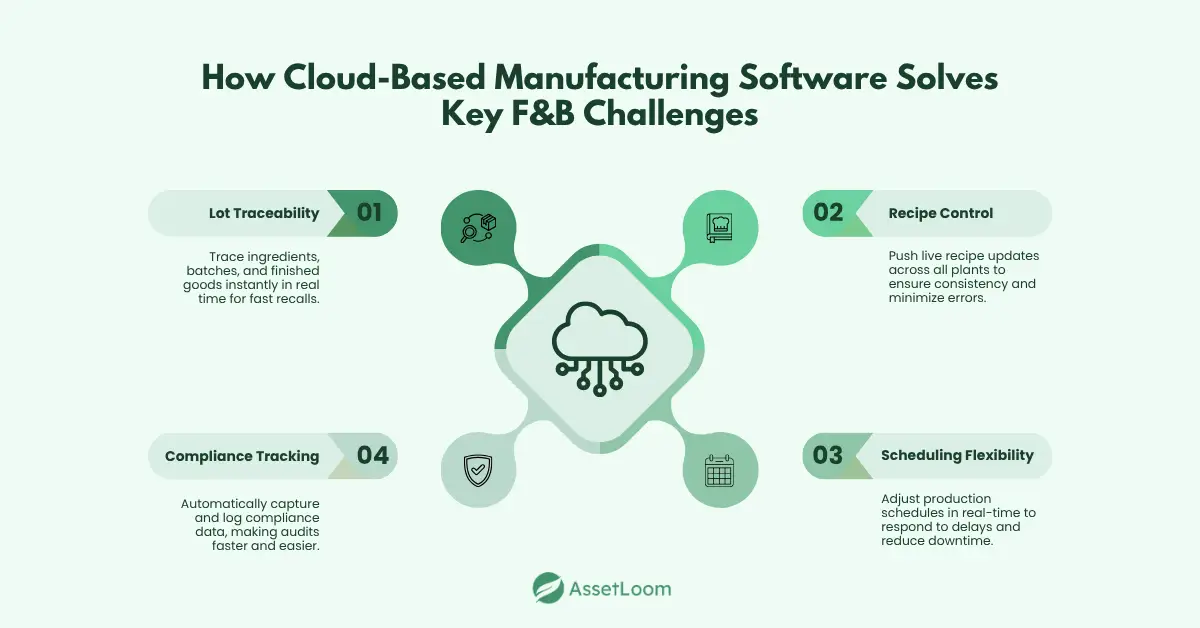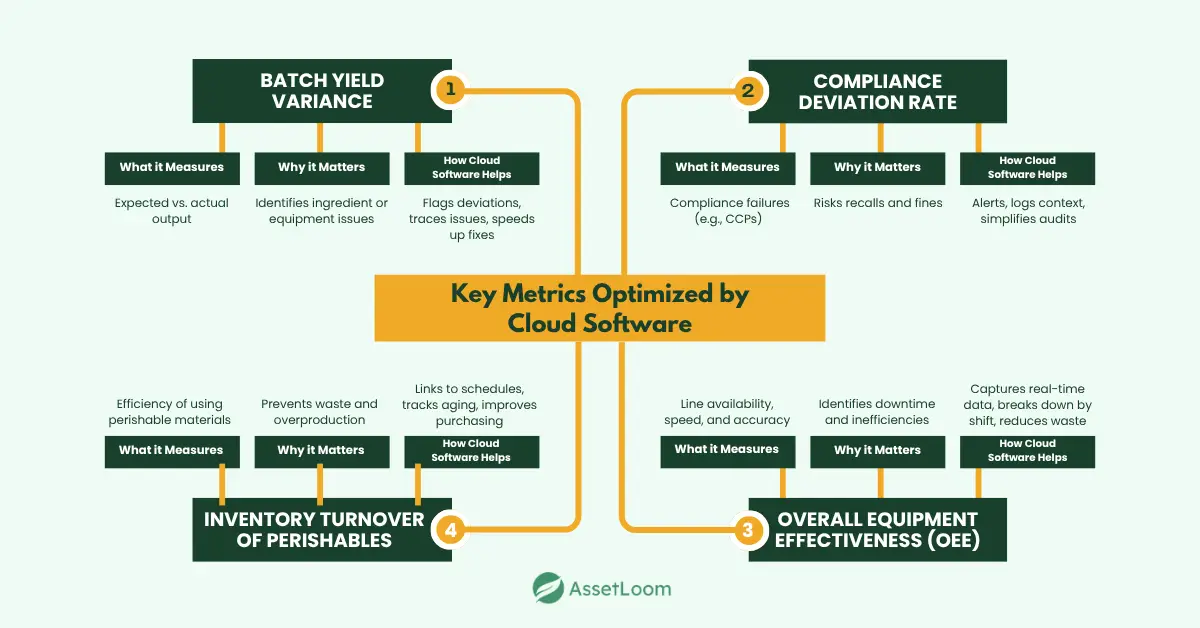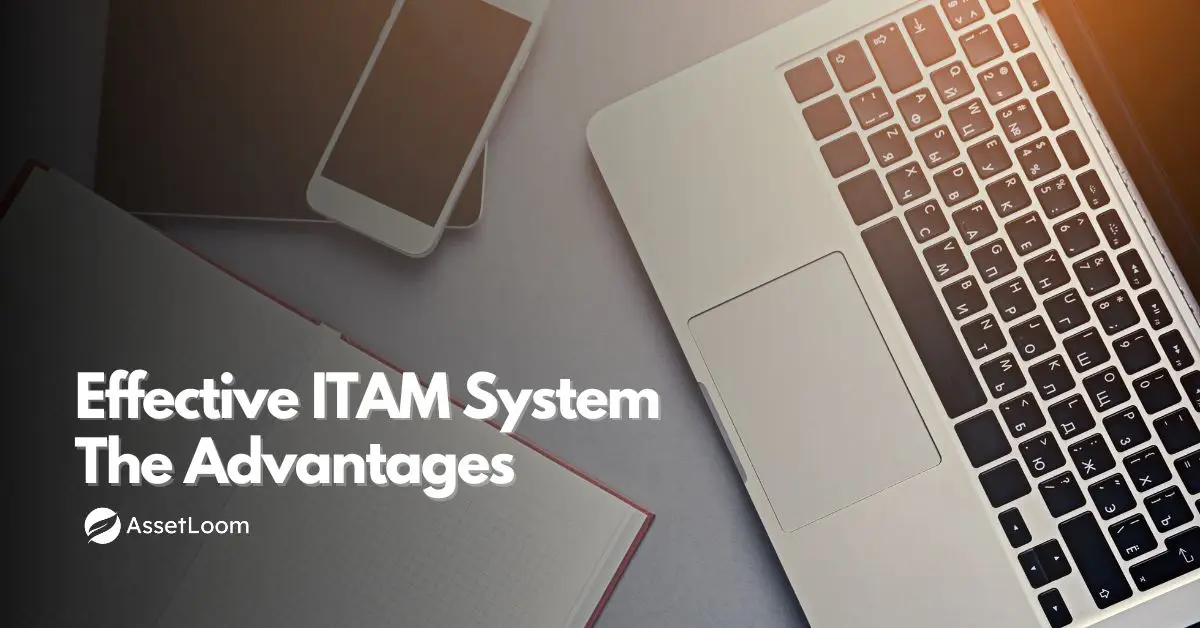Cloud-Based Manufacturing Software for Food & Beverage Industry
Learn how cloud-based manufacturing software helps food & beverage companies improve traceability, compliance, and production control.
Food and beverage manufacturers deal with nonstop pressure, tight deadlines, strict safety rules, and complex recipes that can change overnight. Add in perishable ingredients and unpredictable supply chains, and even small issues can snowball into major setbacks.
Many still rely on spreadsheets, paper logs, or legacy systems to keep production moving. But when it comes to tracking batches, handling audits, or adjusting to last-minute changes, those tools often fall short.
That’s why more F&B manufacturers are turning to cloud-based manufacturing software. But beyond the buzz, how exactly does this technology solve the daily problems unique to food and beverage operations?
How Cloud-Based Manufacturing Software Solves Key F&B Challenges
For food and beverage manufacturers, the right cloud-based system isn't just a tech upgrade. It's a process-level transformation. Here's how it tackles critical pain points:
1. Instant, Audit-Ready Lot Traceability
Recalls in the F&B industry demand speed and precision. Cloud-based systems allow teams to trace every ingredient, batch and finished good forward and backward within seconds. Quality assurance (QA) teams can pull up complete trace paths, from raw material intake to final distribution, without sifting through paper or disconnected systems.
2. Centralized Recipe Control That Prevents Floor-Level Errors
A single change to a formulation - whether due to cost optimization or allergen substitution - can be pushed live across all plants. This ensures operators are always using the latest version, minimizing inconsistencies and eliminating manual rework.
3. Built-in Compliance Monitoring
Temperature logs, sanitation checks, and critical control points (CCPs) can be automatically captured and flagged if out of spec. Instead of prepping for audits manually, QA teams can give auditors secure, read-only access to digital records that are always current.
4. Real-Time, Flexible Scheduling
When raw materials are delayed or production lines go down, planners can adjust schedules on the fly using live data. The software recalculates workloads, shift needs, and delivery timelines, reducing downtime and missed orders.

F&B Scenario: A Mid-Sized Beverage Company in Action
Consider a mid-sized beverage manufacturer producing a mix of carbonated drinks and functional waters. Before switching to cloud-based manufacturing software, they managed production with spreadsheets, paper-based QA logs, and manual scheduling. Small issues - like a mislabeled ingredient or a delayed syrup delivery - often escalated into late shipments or compliance headaches.
After implementing a cloud-based system:
-
Recipe updates were instant and controlled — When a natural sweetener formula changed, the new version pushed directly to all lines, preventing outdated batches from being produced.
-
Lot traceability became effortless — During a distributor complaint about off-spec flavor, QA traced the entire batch history, down to the supplier lot of citric acid, in under a minute.
-
Compliance was continuous, not reactive — Critical control point (CCP) checks like pasteurization temperatures were automatically logged. No more chasing paper during audits.
-
Production became more agile — When carbonation tanks were delayed, the scheduler reshuffled runs in real time, reassigning staff and minimizing downtime.
The result? A 30% reduction in production delays, 40% faster audit prep, and significantly fewer product holds.
Key Metrics to Track with Cloud-Based Manufacturing Software
When food and beverage manufacturers adopt cloud-based systems, data becomes more than a record; it becomes a decision-making engine. But not all metrics are created equal. The most effective teams focus on a small set of KPIs that drive product quality, operational efficiency, and compliance.
Here are four essential metrics that cloud-based platforms help monitor and optimize:
1. Batch Yield Variance
What it measures: The difference between your expected and actual production output per batch.
Why it matters: High variance may indicate ingredient inconsistencies, process errors, or equipment issues, often before they show up as product defects.
How cloud software helps:
-
Flags unusual yield deviations automatically
-
Lets you trace issues back to specific inputs, equipment, or operators
-
Helps QA and production align on root cause and resolution faster
2. Compliance Deviation Rate
What it measures: The frequency of failures in hitting key compliance or safety targets, such as CCPs (critical control points).
Why it matters: Repeated deviations can lead to regulatory action, recalls, or reputational damage.
How cloud software helps:
-
Provides real-time alerts when thresholds are breached
-
Logs each deviation with contextual data (operator, line, timestamp)
-
Simplifies audit readiness with complete digital records
3. Overall Equipment Effectiveness (OEE)
What it measures: A combined score of how available, fast, and accurate your production lines are running.
Why it matters: OEE reveals where you're losing capacity through downtime, slow cycles, or product rejects.
How cloud software helps:
-
Captures machine data automatically for real-time visibility
-
Breaks down OEE by product, shift, or machine
-
Helps teams identify and prioritize the biggest sources of waste
4. Inventory Turnover of Perishables
What it measures: How efficiently you're using short-shelf-life raw materials.
Why it matters: Low turnover increases the risk of spoilage, write-offs, and overproduction.
How cloud software helps:
-
Links inventory movement to production schedules and forecasts
-
Tracks aging of raw materials and alerts for at-risk stock
-
Improves purchasing decisions with actual usage trends
By focusing on these metrics, manufacturers can move from reactive to proactive and from compliance-driven to performance-optimized. Better still, when these metrics are part of a connected manufacturing management software platform, insights don’t sit in silos. They inform everything from planning and procurement to QA and executive reporting.

Read also: The Surprising ROI of Investing in Inventory Tracking Management
Making the Switch to Cloud-Based Manufacturing Software Without Disruption
Shifting to cloud-based manufacturing software doesn’t have to mean flipping your entire operation upside down. For most food and beverage teams, the smartest approach is to start small, focus on solving one key problem, and build from there.
Recipe control and compliance tracking are often the best place to begin. They’re the areas that create the most friction, like version mismatches, missed temperature logs, and last-minute audit scrambles. Moving just these workflows into a centralized, cloud-based system can instantly make daily work smoother and more reliable.
From there, the transition should feel gradual, not disruptive. Many manufacturers start with one product line, giving their team space to learn and adjust. Having a few internal champions, like operators, QA leads, or schedulers, can make a big difference in shaping the rollout and helping others adopt the system with confidence.
The key is to stay focused on what matters: traceability, scheduling agility, fewer quality issues, or more control over perishable inventory. When the goals are clear, the technology becomes a support system, not just another screen.
Cloud-based manufacturing software isn’t just modern. It’s practical. It gives your team the tools to adapt, stay compliant, and run leaner operations without constant firefighting.
Embrace the Future of Food & Beverage Manufacturing
Cloud-based manufacturing software is more than just a trend. It’s a solution to real challenges in the food and beverage industry. From improving traceability to optimizing production, the benefits are clear and immediate.
Starting with the most impactful areas and building from there gives your team the control and flexibility they need to succeed. The future of production is smarter, more efficient, and cloud-powered. It’s time to embrace that future and unlock your business’s full potential.

Related Blogs
Subscribe for Expert Tips and Updates
Receive the latest news from AssetLoom, right in your inbox.

